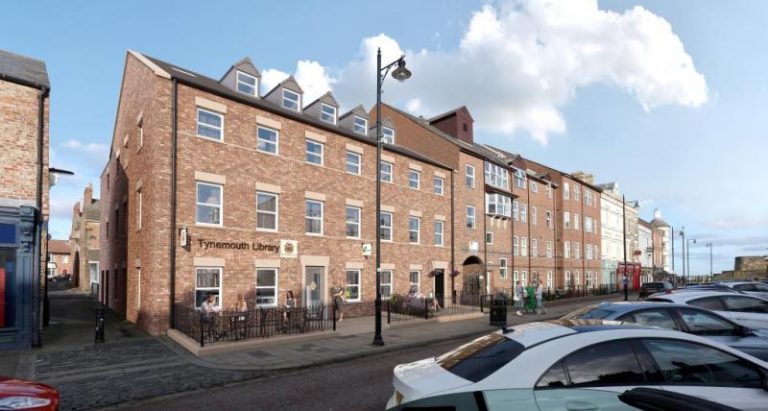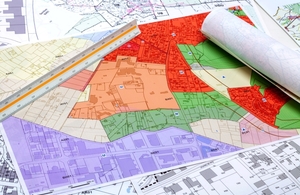
below is the response submitted by Tom to the October Local Plan Visions & Options Consultation, it is published here as part of our commitment to openness. The next stage of consultation for the Local Plan will open in December. We have published advice here on how you can contribute.

This response represents my view as elected Councillor on what would be in the best interests of the Tynemouth Residents that I represent, young and old, acknowledging that individual needs and views will differ. I have also encouraged residents to make their own submissions to the local plan process.
I am also writing to represent the interests of the young people who attend school in Tynemouth Ward, this is a significant community who’s interests might otherwise be neglected. As the plan process moves on to the next stage, I will work to find ways to involve these school communities directly.
Any comments in this submission are in the context of acknowledging the difficulties of developing the viable plan we need under UK legislation and the formidable financial interests in play.
Meeting Housing Targets
Tynemouth Ward is split between denser walkable areas close to Metro with house types that include Apartments, Terraced Houses and Tyneside Flats vs. other areas with less dense semi-detached and detached homes, some better connected than others. The Ward is well served by green space, retail and leisure facilities.
Most Tynemouth Residents acknowledge the need for new homes but would be unlikely to support extensive green belt release for new housing. Instead residents preference would be for use of brownfield sites and better use of land already released from greenbelt but not yet consented for development. Making the housing target numbers add up in line with this preference is very difficult.
Tynemouth itself represents an example of the strong demand for dense mixed housing, well served by public transport and community facilities. There are over 2,000 dwellings located within walking distance of Tynemouth Metro Station, including many social homes. Housebuilders will always argue that all housing demand is for more disconnected sprawl, but my residents know that this is untrue.
There is considerable contrast between Tynemouth Village’s housing mix and that proposed around the new Metro Station for Murton Gap. Maybe we could aim to build dense, well connected, interesting, mixed-use places on the edge of countryside that people will want to visit?
I’d ask that the report “Stepping Off The Road To Nowhere” published by the thinktank Create Streets is considered as part of the plan evidence base. Although aimed at central government there is much a local plan could take from it:
- Adopting Vision Led Transport and Urban Planning
- Building Places, Townbuilding not Housebuilding
- Building Beautifully on Much Less Land
My residents would experience considerably less impact from regional development of new housing if it was concentrated on sites close to viable new Metro Stations or new Metro Lines. The proposed line between Northumberland Park and Percy Main (via Cobalt and Silverlink) would benefit my residents, it will only happen if we set a clear objective to use the local plan as a tool to make it happen.
Village & Coast
Tynemouth itself has relatively few potential development sites although some will inevitably come through as windfall sites during the plan period. Proposals for development of land at Tynemouth Metro Station illustrate the variety of proposals that can come forward. The new unsubmitted plans for town houses on this site are considerably more popular than the consented apartment scheme. The borough would benefit from policies covering “gentle density” setting out what’s appropriate in locations of this type.
Tynemouth’s Coast enjoys considerable protection as green space under the existing local plan and residents want this to continue. We could consider stronger protection for views of key buildings and aim for reduced street clutter near our historic sites.
There is need for much better facilities aimed at swimmers and surfers at Tynemouth beaches, this would be best accommodated at brownfield sites on or above Longsands.
Over the last fifteen years Tynemouth Front Street has changed with increasing intensity of nighttime economy activity. Where possible the local plan should act to moderate this intensity.
Recent investment in the area above Longsands away from residential areas has been welcome. This area might benefit from participatory masterplanning as part of the local plan. There is uncertainty over the extent of encapsulated material at the former Tynemouth Plaza site. It may be that small parts of this site may be viable for carefully planned development to support the visitor economy.
My residents support efforts to regenerate North Shields and Whitley Bay. Anything that strengthens alternatives to Tynemouth for leisure and food drink uses is a “good thing” in the eyes (and ears) of residents who live in the centre of Tynemouth Village.
Children & Schools
Tynemouth has three secondary schools located within the ward which are important both as destinations for existing residents and as part of educational provision for new residents. It is vital that when new housing provides investment in streets and junctions that the needs of children travelling to school are paramount.
Tynemouth’s Children do not enjoy the same freedom to move around independently as previous generations. This impacts both children themselves and places a burden on parents and carers. Children should be able to safely get home by themselves from after school activities by walking, cycling or public transport.
I believe that Tynemouth Residents would agree with the Vision and Objectives set out in the plan documents produced so far. However our new local plan could also aim to do more to restore and protect children’s ability to enjoy our borough independently.



